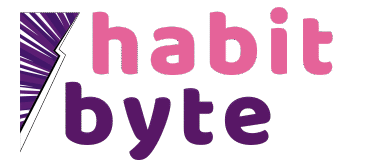Batch Cooking vs. Component Prep for Bulking: Which Is Better?
When you’re trying to gain lean mass, the best meal prep plan is the one you’ll follow consistently. Two proven approaches, batch cooking full meals and component prep (mix-and-match), both help you hit a calorie surplus without decision fatigue. Below, we compare them side by side, share practical tips, and recommend when to use protein pancakes vs. protein shakes so you can choose the right system for your training, schedule, and appetite.
Quick Nutrition Targets for a Smart Bulk
- Calories: Maintenance + 250–500 per day to gain 0.25–0.5 kg (0.5–1 lb) weekly.
- Protein: ~1.6–2.2 g/kg body weight daily.
- Carbs: Emphasize around training (rice, pasta, oats, potatoes, fruit).
- Fats: Use calorie-dense add-ons (olive oil, nuts, avocado, pesto, cheese).
Option 1: Batch Cooking (Full Meals)
- How it works: Cook complete dishes, like chicken–rice–veg bowls or pasta bakes, and portion into containers.
- Pros: Ultra convenient; reliable calories; minimal daily effort; easy to track macros.
- Cons: Repetition fatigue; some foods reheat poorly; limited flexibility on training vs. rest days.
- Best for: Busy weeks, office life, or anyone who wants grab-and-go meals with zero assembly.
Option 2: Component Prep (Mix-and-Match)
- How it works: Cook proteins, carbs, and veggies separately (e.g., salmon, chicken thighs, rice, potatoes) plus a few sauces; assemble different combos on the fly.
- Pros: High variety; easy to scale portions for hunger and training days; keeps meals interesting.
- Cons: Slightly more daily assembly; requires good storage and a quick weighing habit.
- Best for: Lifters who value flavor rotation and precise portion control without recooking.
Side-by-Side Comparison
- Speed on busy days: Batch cooking is fastest (heat and eat). Component prep is quick but needs assembly.
- Variety over a week: Component prep wins, swap sauces and sides for new flavors daily.
- Macro precision: Both work; component prep offers easier on-the-spot adjustments.
- Adherence (long-term): Variety drives consistency for many people, edge to component prep.
- Travel/office friendliness: Batch cooking edges out, fewer pieces to pack and track.
Protein Pancakes vs. Protein Shakes: Which Helps More?
- Satiety: Pancakes are more filling and chewable, great if you snack mindlessly. Shakes digest faster, ideal pre/post-workout.
- Portability: Shakes win for commuting and travel. Pancakes are portable but best reheated.
- Calorie density: Both scale easily. Shakes make liquid calories (milk, oats, nut butter, oil) effortless.
- Best use: Keep both. Pancakes for breakfast or a hearty snack; shakes for quick calories or workout windows.
- Simple pancake prep (10–12): Blend 2 cups oats, 2 scoops protein, 2 bananas, 4 eggs (or 1 cup whites + 2 eggs), 1 cup milk, 1 tsp baking powder, pinch salt/cinnamon. Cook 2–3 minutes per side. Freeze or refrigerate.
- Simple shake ideas: Blender pack (banana, berries, spinach, almond butter) + milk + 1–2 scoops protein; or shaker bottle with protein, shelf-stable milk, 30–60 g oats, and honey.
How to Choose the Right Approach
- Choose Batch Cooking if you: Have very limited time on weekdays; prefer identical lunches; want predictable calories with minimal decisions.
- Choose Component Prep if you: Get bored easily; train hard and need to upsize carbs on some days; love swapping sauces and textures.
- Hybrid approach: Batch-cook one anchor meal (e.g., lunch bowls) and component-prep dinners for variety. Use shakes on hectic days and pancakes to front-load calories at breakfast.
Smart Grocery Shortlist
- Proteins: Chicken thighs, salmon, lean beef, ground turkey, tofu/tempeh, Greek yogurt, cottage cheese, whey/plant protein.
- Carbs: Jasmine rice, pasta, tortillas, oats, potatoes, sourdough, granola, frozen fruit.
- Fats & flavor: Olive oil, avocado, nuts, nut butter, cheese, pesto, BBQ/teriyaki/tikka sauces, herbs/spices.
- Tools: Rice cooker, sheet pans, large nonstick skillet, high-power blender, food scale, 8–10 containers.
1-Day Sample Bulking Menu (Prepped)
- Breakfast: Protein pancakes (3–4) with peanut butter and honey + Greek yogurt + berries.
- Snack: Shake (milk, protein, oats, banana, peanut butter).
- Lunch (batch or component): Beef and rice bowl: 170 g lean ground beef, 1.5–2 cups rice, peppers/onions, avocado, salsa.
- Snack: Trail mix (nuts, dried fruit, dark chocolate) + cottage cheese.
- Dinner: Salmon, roasted potatoes, olive-oil-drizzled broccoli, pesto drizzle.
Increase portions or add olive oil, cheese, and extra rice to reach your calorie target.
Tiny Habits That Make It Stick
- Schedule it: “Sundays at 4 pm I cook proteins and carbs; Wednesdays I restock snacks.”
- Flavor rotation: Keep 3–4 sauces on hand to transform the same base ingredients.
- Calorie boosters: Add 1–2 tbsp olive oil to cooked rice, sprinkle cheese, or sip juice/chocolate milk with meals.
- Food safety: Cool before sealing; refrigerate within 2 hours; eat within 3–4 days or freeze.
Final Recommendation
Both meal prep styles can power a successful bulk, but for most lifters, component prep is the better long-term choice because it supports variety, easy portion adjustments, and consistent adherence , all key drivers of muscle gain. If your weekdays are packed or you prefer simplicity, batch cooking wins on convenience and predictability. Pair your chosen approach with protein shakes around workouts for effortless calories, and use protein pancakes at breakfast to front-load your intake. For detailed guidance, read our complete guide on meal prep for muscle gain to optimize your weekly routine. Choose the system you can repeat consistently, and your steady calorie surplus will take care of the rest.
